![]()
Chromosphere through a LIMICON Halpha filter
Chromosphere through a Coronado PST
Sun setting over the Channel in front of Dinard (Brittany). This picture was captured with a CANON EOS300D digital camera at the focus of a 300mm refractor (F/4.3).
 |
 Movie from
this picture (640x480 compression DIVX 302K)
Movie from
this picture (640x480 compression DIVX 302K)
Don't mistake about the lattitude of Brittany ! The vertical path of the sun is just the result of picture registration. In fact the sun is moving down to the right.
Jet airliner flying in front of a
setting sun (click to enlarge).
Picture captured with a 8" MEADE LX10 telescope and a CASIO
QV4000 digital camera behind a 40mm eyepiece.
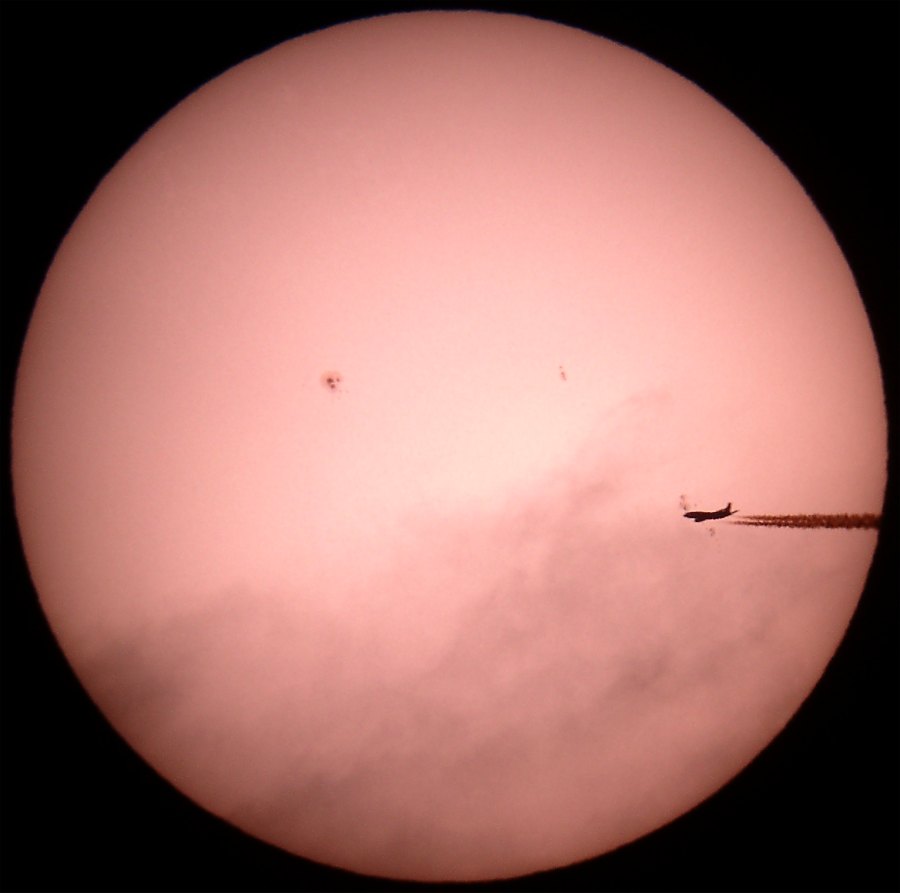 |
Crepuscular rays observed as the sun was setting
down over Mount Aigoual (CÚvennes mountains).
Captured with CANON EOS300D and 18mm lens.
 |
Sun setting behind trees.
Spectral sun light spreading gives a green color to the top of
the solar limb. This phenomenon is commonly called green ray.
With naked eye, it is perceived just a few seconds before the sun
is fully set under the horizon.
Picture taken with a MEADE ETX-90EC telescope and an EPSON PC3000Z
digital camera behind a 40mm eyepiece.
 |
Sun setting in clear sky on
Gironde estuary in France.
Picture taken from the Blaye citadel with an EPSON PC3000Z
digital camera.
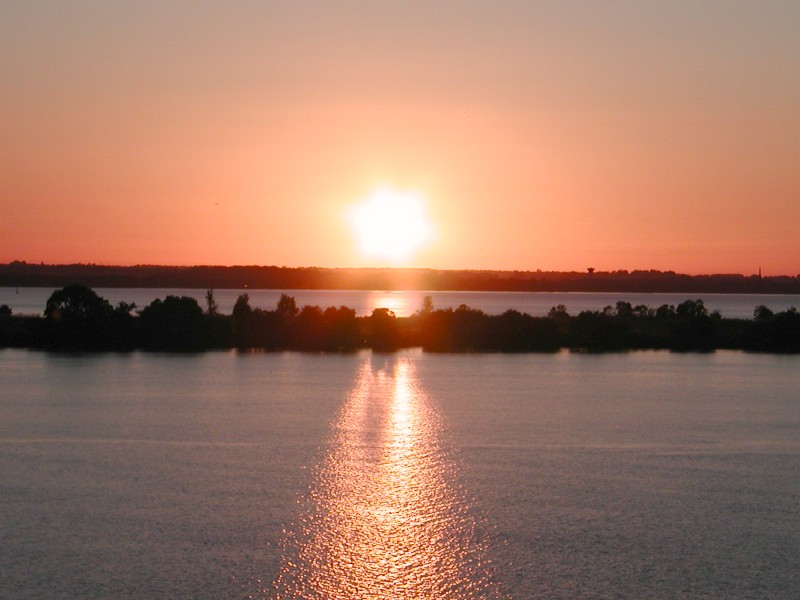 |
 Movie from
this picture (500x382 .GIF format 382K)
Movie from
this picture (500x382 .GIF format 382K)
Sun setting in cloudy sky on
Gironde estuary in France.
Picture taken from the Blaye citadel with an EPSON PC3000Z
digital camera.
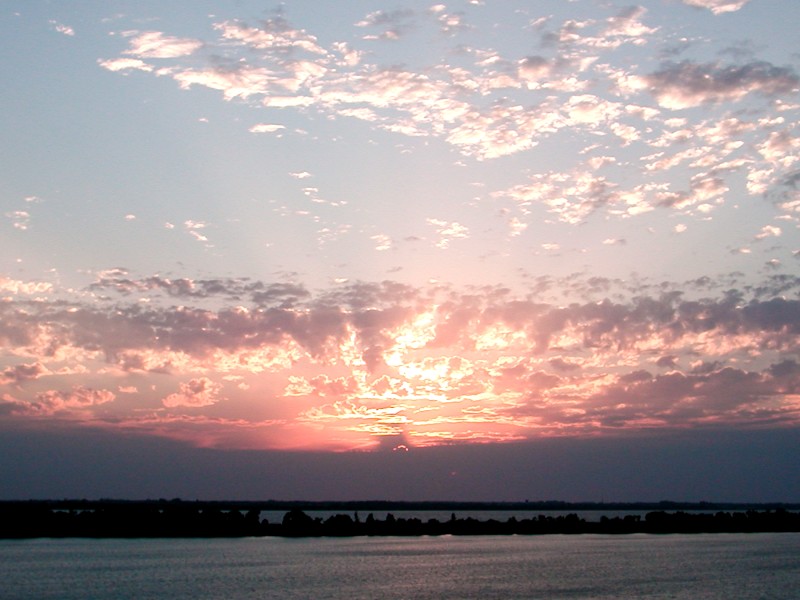 |
Solar halo captured at the bottom
of a building.
This circular halo whose radius is 22░, is the result of the
decomposition of sunlight by ice cristals in cirrus clouds.
Picture captured with an EPSON PC3000Z digital camera.
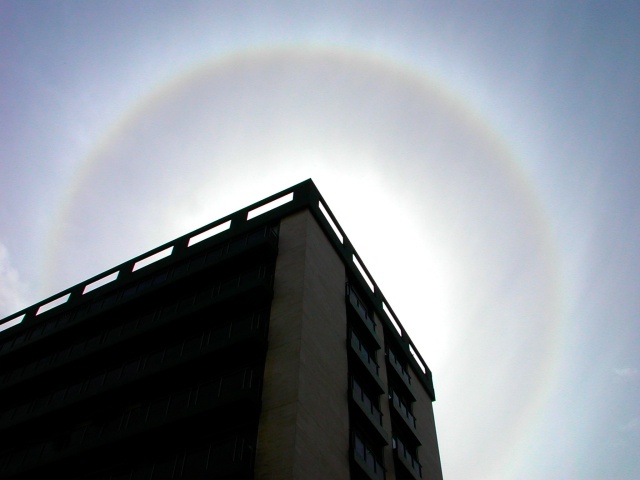 |
Circumzenithal arc
A circumzenithal arc is produced by refraction of sun light by
ice cristals in high clouds. Appearing very closed to zenith, it’s
often remains ignored. It’s always surprising to see this
inversed rainbow rolled up around zenith. A circumzenithal arc is
frequently associated with a 22░ halo.
Picture captured with an EPSON PC3000Z digital camera.
 |
This iridescence is called sundog.
Sundogs appear symetrically 22░ apart from the sun, at the same
level as the sun. This one was captured on the right side of the
sun.
Picture captured with a CASIO QV4000 digital camera.
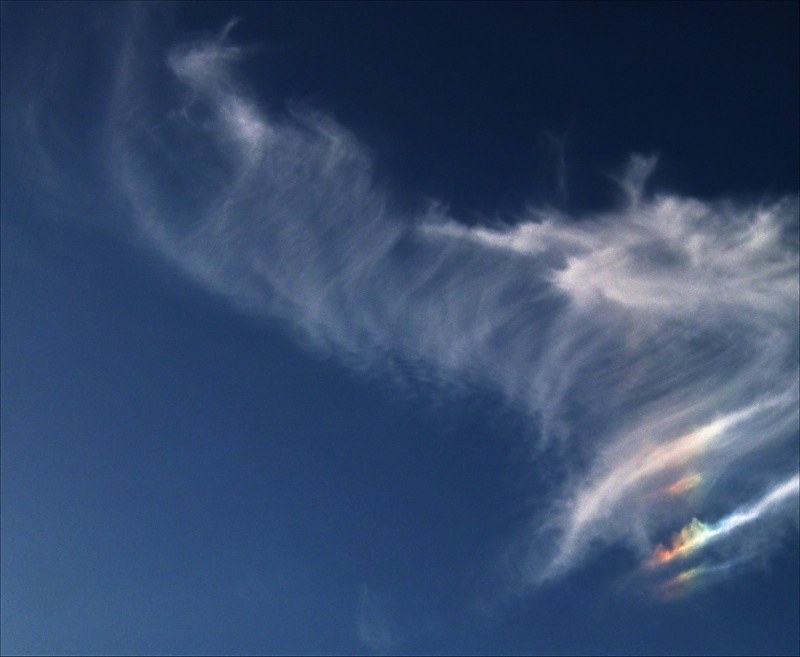 |
 Evolution of a
parhelion (900x600 DIVX compression 1954k)
Evolution of a
parhelion (900x600 DIVX compression 1954k)
This accelerated movie represents a real duration of about 40 minutes (5 seconds between consecutives exposures with CANON EOS300D and Pocket Shutter sequencer).
Couple of parhelia captured in late afternoon with an EPSON PC3000Z digital camera. Click to enlarge.
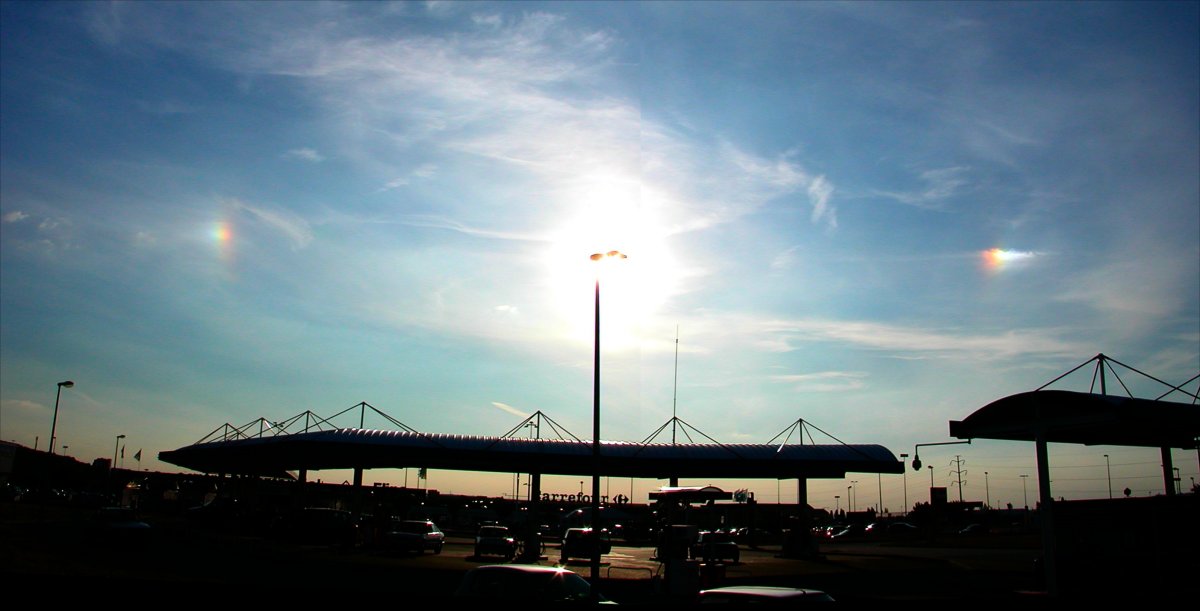 |
Sometime clouds are covered with
magnificent nacreous colours. Such clouds are called iridescent
clouds. This phenomenon occurs when the size of droplets
composing the cloud is uniform. Iridescence results from
interferences between sun rays diffracted by droplets.
Picture captured with a CANON EOS 300D digital camera.
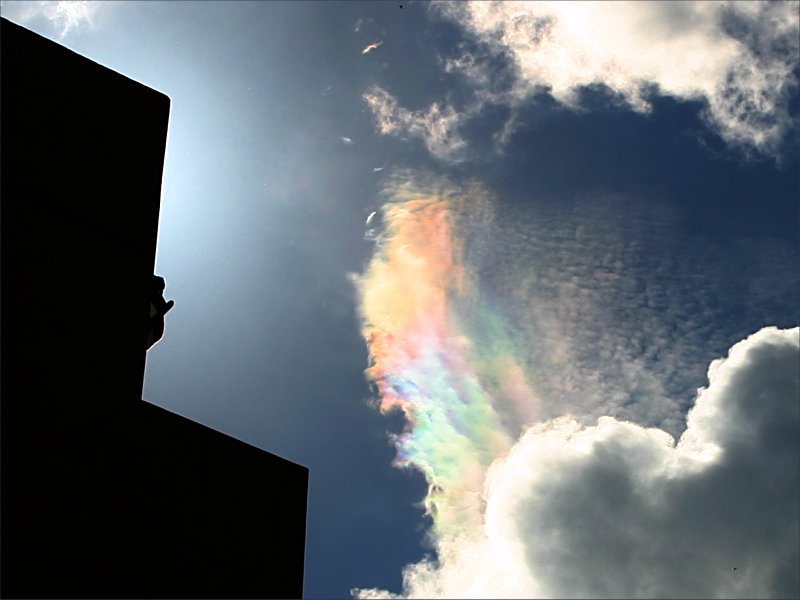 |
Solar pillar above canadian
forest in Quebec. This phenomenon is the result of the sun light
reflecting on atmospheric ice particles.
Picture taken with an EPSON PC3000Z digital camera.
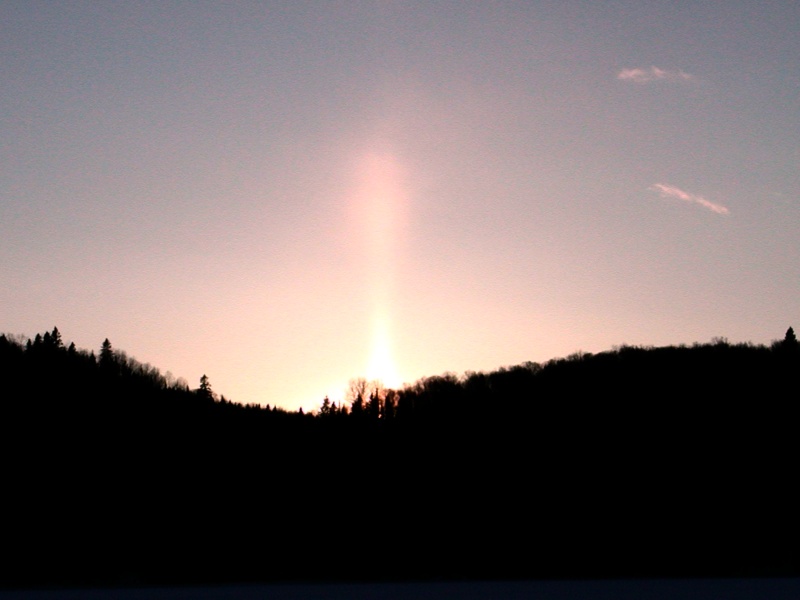 |